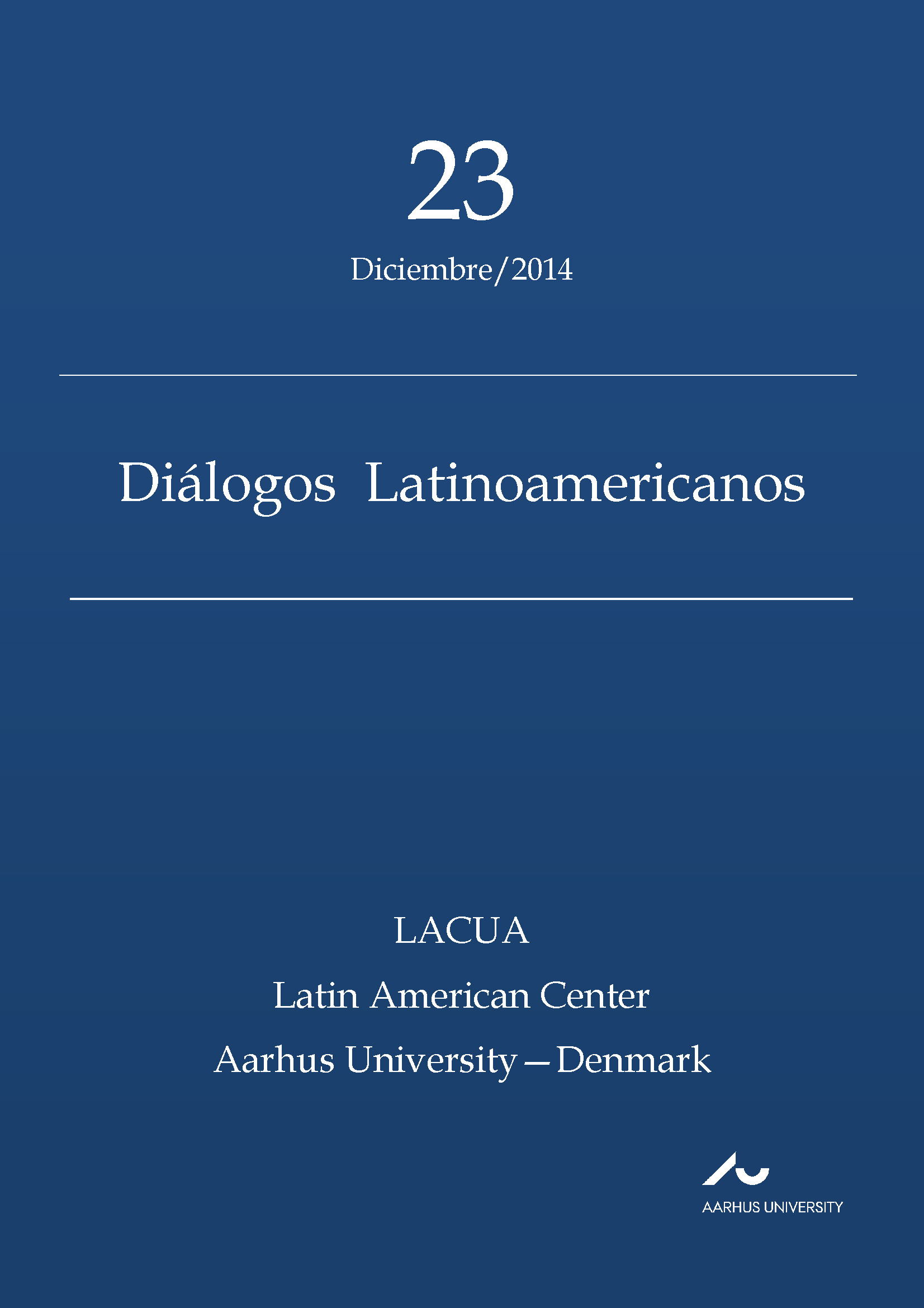Un pícaro moderno y fronterizo en La Travesía de Enrique de Sonia Nazario
DOI:
https://doi.org/10.7146/dl.v15i23.113119Keywords:
Picaresque, Testimonial literature, new journalism, immigration, bordersAbstract
Spanish picaresque literature has an extensive literary tradition dating back to the Spanish
Golden Age. While its development is associated primarily with Spain, its influence was
felt in many Latin American countries, including in many texts in the past as well as in our
days. The purpose of this essay is to show how Enrique´s Journey by Sonia Nazario retains
many similar characteristics of the Spanish picaresque novel, while also distancing itself
from this style through the use of testimonial discourse. The writer has used many
techniques from new journalism in order to paint a realistic picture of the social reality
related to the mass immigration of Central Americans to the United States.
References
and Hopes from the South. México: Melel Xojobal.
André, Maria Claudia (2007). “Testimonio, nuevo periodismo o ficción?
Subversión de los géneros en Recuerdo de la muerte de Miguel Banasso”. Alba
de América. Vol.26, p. 390.
Beltrán del Río, Salvador (2010). “Enfrentan proceso 40 agentes de migración.” El
Bravo de Tamaulipas, agosto.
Burgos, Elizabeth (1983). Me llamo Rigoberta Menchú y así me nació la
conciencia. España: Seix Barral.
Carrió de la Vandera, Alonso (1997). El Lazarillo de ciegos caminantes. Buenos
Aires: Emecé.
Correa, Gustavo (1993). “El héroe de la picaresca y su influencia en la novela
moderna española e hispanoamericana. Thesaurus: Boletín del Instituto Caro y
Cuervo: Muestra Antológica 1945 -1985. Rubén Paes Patiño. Santa Fe de
Bogotá: Instituto Caro y Cuervo.
Fernández de Lizardi, Joaquín. (1992) El Periquillo Sarniento. México: editorial
Porrúa.
Fiengo-Varn, Aurora (2002). Jesusa Palancares: Pícara o Heroína. Elementos de la
picaresca en Hasta no verte Jesús mío de Elena Poniatowska.” Chiricú.
Volumen 9, (Spring – Fall 2002) 98-108.
Gael, García Bernal. <http://www.amnesty.org/en/news-and-updates/amnestyinternational-
and-gael-garc%C3%AD-bernal-launch-films-migrants-mexico-
2010-11-08>,<http://www.youtube.com/watch?v=WDcDOk1cnlA>.
Grillo, Beatriz Elsa. “La picaresca Latinoamericana en Eva Luna y la construcción
de un orden simbólico femenino”. <www.unne.edu.ar/
revistas/postgrado/revista 4/grillo.pdf>.
Hood, Edward (2008). “Honduras en la cruz: El corneta de Roberto Castillos”.
ISTMO Revista de estudios literarios y culturales centroamericanos. N16.
Leal, Luis (1974). “Picaresca hispanoamericana: De Oquendo a Lizardi.” Estudios
de literatura hispanoamericana en honor a José J. Arrom. Andrew
Debicki(eds), Chapel Hill: Department of Romance Languages.
Meyer, K y S. Schlickers (eds.) (2008). “El género de la novela picaresca”. La
novela Picaresca: concepto genérico y evolución del género (siglo XVI y
XVII). Madrid: Ediciones Iberoamericana, 2008.
Nazario, Sonia (2006). La travesía de Enrique. New York: Random House Inc.
Poniatowska, Elena (2008). Bajo la mirada de Elena Poniatowska” en Espejo
doble. <web2.ilce.edu.mx/redescolar/redescolar>.
—. (2009). Fuerte es el silencio. México: Ediciones Era.
—. (1987). Hasta no verte Jesús mío México: Ediciones Era.
—. (1997). La noche de Tlateloco: testimonios de historia oral México: Ediciones
Era.
Rodríguez Ruiz, Jaime Alejandro. El testimonio: voz popular en busca de forma.
recursostic.javeriana.edu.co/multiblogs2/culturapopular/category/3-literaturatestimonial/.
Hoefer, Michael Nancy Rytina, y Bryan C. Baker (2011). “Estimates of the
Unauthorized Immigrant Population Residing in the United States: January
2010”. U.S. Department of Homeland Security & Office of Immigration
Statistics. Febrero.
Sigüenza y Góngora, Carlos (1983). Obras históricas. México: Editorial Porrúa.
Vargas Llosa, Mario (1999). La ciudad y los perros. México: Alfaguara, 1999.
Wolfe, Tom (1976). El nuevo periodismo. José Luis Guarner, trad. Barcelona:
Editorial Anagrama.
Downloads
Published
How to Cite
Issue
Section
License
Counting from volume 31 (2022), articles published in Diálogos Latinoamericanos are licensed under CC-BY 4.0. Read more about the license terms here https://creativecommons.org/licenses/by/4.0/.
No Creative Commons license applied on volumes 1-30. All rights reserved by the authors. Readers may download, read, and link to the articles, but they cannot republish the articles.
With the publication of volume 31 (2022), authors retain the full copyright to their articles and give Diálogos Latinoamericanos the right to the first publication. Authors also retain copyright to earlier versions of manuscripts, such as the submitted (pre-print) and the accepted manuscript (post-print).
Copyright to articles published in volumes 1-30 is held by the authors.





